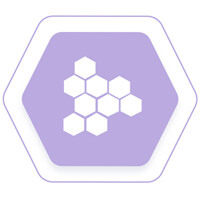Gene Therapy Vector Development Service
Gene therapy vector is an intermediary that delivers exogenous genes into target cells in order perform the function of introducing, replacing or modifying specific genes and ultimately treating corresponding diseases. Our company provides top-tier research services and experimental platforms to help you lead the development of vectors for gene therapy of Autoimmune Diseases & Inflammation.
Gene Therapy Vector in Autoimmune Diseases & Inflammation
In recent years, a variety of vectors have been proved to have potential in the application of gene therapy for autoimmune diseases by research, including the plasmid vector applied in multiple sclerosis and lentiviral vector in Wiskott–Aldrich syndrome. According to the different target cell type, the therapeutic gene delivered, and safety considerations, the selection of viral or non-viral vectors for therapeutics to achieve maximum therapeutic efficiency is the key link to implement gene therapy.
 Fig.1 A summary of the types of delivery routes of Cas9 (Glass Z., et al., 2018)
Fig.1 A summary of the types of delivery routes of Cas9 (Glass Z., et al., 2018)
 Viral Vectors
Viral Vectors
Adenoviruses, adeno-associated viruses, and lentiviruses are most widely used gene therapy vectors, with adenoviruses accounting for almost half of the application trials. Adeno-associated virus and lentiviruses are capable of infecting both dividing and non-dividing cells, allowing for the long-term stable expression of the target gene. Adeno-associated virus exhibits lower expression levels, but its immunogenicity is extremely low. Although both retroviral and lentiviral expression systems involve random integration, they offer high expression levels and are suitable for cellular experiments.
 Non-Viral Vectors
Non-Viral Vectors
Non-viral vectors are also a safe and effective choice for delivering target genes, offering greater flexibility and ease of preparation. Mature non-viral vectors include circular DNA vectors, liposomes, polymers, nanoparticles, and other forms of physical encapsulation. For instance, large molecular cargoes can enter cells through nanoparticle formation with inorganic materials such as gold, silica, and carbon nanotubes. Additionally, physical methods such as electroporation and calcium phosphate precipitation provide simpler and more direct approaches.
Our Services
The development of gene therapy carriers has completely unlocked a new chapter in medical methods, and is a powerful drug platform for the therapeutics of Autoimmune Diseases & Inflammation. Our company provides gene therapy vector development service with the support from interdisciplinary specialized persons and utilization of various technological platforms, as illustrated in the flowchart below:
Viral Vectors
- Lentivirus (LV)
- Adenovirus (ADV)
- Retrovirus (RV)
- Adeno-Associated Virus (AAV)
Non-Viral Vectors
- Plasmids
- Polymers
- Exosomes
- Microneedles
- Liposomes
- Nanoparticles
- Transposable Element
Workflow for Gene Therapy Vector Development

Target Determination

Fragment Amplification or Synthesis

Vector Selection & Construction

Vector Expansion & Administration

In Vitro & In Vivo Assessment
Our Advantages

- Timely stage reporting and whole process follow-up
- Thorough experimental operation and analysis
- Development with high efficiency and short cycle
- High-level professional technical team
Composed of genetics experts and genetic engineering researchers with a solid foundation in various vector construction, our company is committed to providing you with comprehensive vector management and quality assurance for Autoimmune Diseases & Inflammation. If you are interested in our services, please don't hesitate to contact us.
Reference
- Glass, Zachary et al. "Engineering the Delivery System for CRISPR-Based Genome Editing." Trends in biotechnology 36,2 (2018): 173-185.